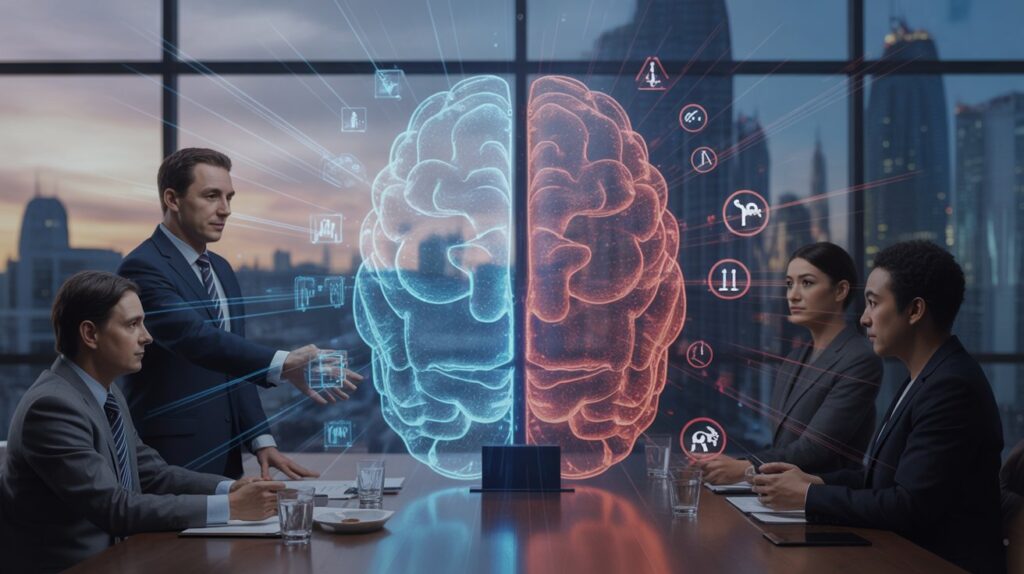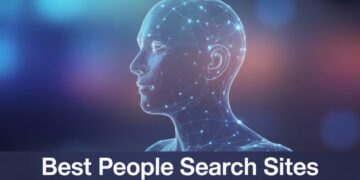Artificial Intelligence (AI) has moved from being a futuristic concept to a present-day reality that is transforming nearly every sector—including education. From personalized learning platforms and AI-powered tutoring systems to automated grading and predictive analytics, schools and universities are integrating AI into classrooms at unprecedented rates.
But as with any technological revolution, AI in education presents a double-edged sword. While it offers immense benefits such as efficiency, accessibility, and individualized learning, it also raises serious concerns about privacy, bias, equity, and the future role of human teachers.
This article provides a comprehensive look at AI in Education: Benefits & Risks, examining the opportunities, challenges, and practical steps needed to use AI responsibly in schools and higher education. By the end, you’ll have a clear understanding of both the promise and the pitfalls of AI in the learning environment—and strategies for finding the right balance.
What Is AI in Education?
Artificial Intelligence in education refers to the application of machine learning, natural language processing, and data-driven algorithms to support teaching and learning. Unlike traditional digital tools, AI systems can:
-
Adapt dynamically to student needs
-
Provide real-time feedback
-
Automate repetitive tasks for teachers
-
Predict outcomes such as student performance or risk of dropout
Key AI applications in education include:
-
Intelligent Tutoring Systems – personalized lessons based on student performance
-
Automated Assessment – grading essays, quizzes, or even open-ended responses
-
Chatbots and Virtual Assistants – answering student queries around the clock
-
Learning Analytics – helping administrators track engagement, attendance, and success metrics
-
Assistive Technologies – such as speech recognition for differently-abled learners
AI is no longer just an experiment. A growing number of schools, universities, and EdTech startups are actively piloting and scaling these tools across the globe.
Benefits of AI in Education
AI brings a range of advantages to the education sector. Below are the most significant benefits supported by research and real-world examples.
1. Personalized and Adaptive Learning
One of the strongest cases for AI in education is its ability to tailor content to individual student needs. Adaptive learning platforms analyze a learner’s strengths and weaknesses in real time, then adjust difficulty, pace, or style accordingly.
-
Example: Platforms like DreamBox and Carnegie Learning adapt math problems based on each student’s response history.
-
Impact: Research shows that adaptive systems can improve student performance and retention by offering just-in-time support rather than a one-size-fits-all model.
2. Efficiency and Automation for Teachers
Teachers spend significant time on administrative work such as grading, attendance, and lesson planning. AI can automate many of these repetitive tasks, freeing up educators to focus on creative, interpersonal, and higher-order teaching.
-
Automated grading tools handle multiple-choice, fill-in-the-blank, and increasingly essay-type questions.
-
AI lesson planning systems generate customized lesson materials aligned with curriculum standards.
3. Real-Time Feedback and Assessment
AI systems provide instant feedback to students, something human teachers may not always be able to offer—especially in large classrooms.
-
Writing assistants highlight grammar, clarity, and argumentation issues immediately.
-
AI quizzes adjust in difficulty based on responses, ensuring learners remain challenged but not overwhelmed.
4. Accessibility and Inclusion
AI can dramatically improve accessibility for students with disabilities or language barriers.
-
Speech-to-text and text-to-speech help visually or hearing-impaired learners.
-
AI-driven translation tools support non-native speakers in multilingual classrooms.
This inclusivity fosters more equitable educational opportunities.
5. Enhanced Student Engagement
AI can help maintain motivation through gamified learning, interactive chatbots, or virtual tutors that feel responsive and engaging. By making education more interactive, students are more likely to stay interested and persistent in their studies.
6. Predictive Analytics for Early Intervention
AI tools analyze data on attendance, participation, and assessments to predict which students may struggle or drop out. Educators can then provide targeted interventions early, potentially improving retention and success rates.
7. Support for Lifelong Learning
AI doesn’t stop at K-12 or higher education. Adaptive platforms and AI-powered MOOCs (Massive Open Online Courses) offer professionals continuous upskilling opportunities tailored to their career paths and goals.
Risks of AI in Education
While the benefits are compelling, the risks and challenges cannot be ignored. A responsible conversation requires weighing these risks against the opportunities.
1. Data Privacy and Security Concerns
AI systems rely on vast amounts of student data, including personal, behavioral, and performance records. This raises critical questions:
-
Who owns the data?
-
How is it stored, shared, or sold?
-
Can it be misused for surveillance or commercial exploitation?
A data breach could expose sensitive information, while opaque policies may erode trust among students and parents.
2. Algorithmic Bias and Inequity
AI systems are only as good as the data they’re trained on. If that data reflects social or cultural biases, the algorithms can perpetuate and even amplify inequalities.
-
Example: Automated grading tools have been found to misinterpret non-native English writing styles, disadvantaging certain groups.
3. Overreliance and Loss of Critical Thinking
When students depend too heavily on AI for problem-solving or writing, they risk losing essential critical-thinking and analytical skills. Instead of grappling with complex ideas, they may defer to algorithms for quick answers.
4. Hallucinations and Misinformation
Generative AI tools are powerful, but they are also prone to “hallucinations”—confidently producing incorrect or misleading information. Students who rely on these tools uncritically may absorb false knowledge.
5. Impact on Human Interaction
Education is not only about knowledge transfer; it is also about social, emotional, and ethical development. Excessive reliance on AI could reduce teacher-student interaction, weakening relationships that are vital for holistic development.
6. Digital Divide and Unequal Access
Not all students or schools have equal access to AI tools, high-speed internet, or advanced devices. This digital divide risks widening the gap between privileged learners and underserved populations.
7. Ethical and Academic Integrity Issues
AI makes it easier for students to cheat by generating essays, solving assignments, or producing entire projects. Educators face mounting challenges in ensuring academic honesty.
8. Costs and Implementation Challenges
While AI promises efficiency, implementation is not cheap. Schools face high upfront costs, training requirements, and ongoing maintenance expenses—often without guaranteed long-term return on investment.
Striking the Right Balance: Mitigation Strategies
To harness the benefits while minimizing the risks, educational institutions need clear strategies.
1. Promote Responsible Use of AI
AI should be framed as a supplement, not a replacement, for human teachers. Students should be encouraged to use it for support, not shortcuts.
2. Ensure Transparency and Accountability
Schools must demand transparency from AI vendors regarding how algorithms function and how data is used. Regular audits and accountability frameworks should be part of AI adoption.
3. Build AI Literacy for Students and Teachers
Critical AI literacy—understanding both capabilities and limitations—should be part of the curriculum for students and part of professional development for educators.
4. Prioritize Privacy and Data Protection
Institutions should adopt strict data governance policies, comply with legal frameworks, and use tools that prioritize privacy and minimal data collection.
5. Address Equity and Access
Governments and institutions must ensure equitable access by investing in infrastructure, subsidies, and inclusive design that accommodates disadvantaged learners.
6. Encourage Hybrid Models
Blended learning models that combine AI with human teaching strike a balance—leveraging AI’s efficiency while preserving the empathy, creativity, and mentorship of educators.
Future Outlook: AI in Education Beyond 2025
Looking ahead, the role of AI in education will expand significantly. Key trends include:
-
Integration with VR/AR: Immersive AI-driven simulations for experiential learning.
-
Explainable AI (XAI): Tools that not only provide results but also explain their reasoning.
-
AI for Social-Emotional Learning: Monitoring and supporting student wellbeing.
-
Policy and Regulation: Increased government oversight to ensure ethical use.
-
AI Literacy Curricula: Preparing students for a world where AI is part of every profession.
AI will not replace teachers, but teachers who effectively use AI will likely replace those who do not. The human element—empathy, guidance, and critical mentorship—remains irreplaceable.
FAQs
Q1: Will AI replace teachers in the classroom?
No. AI can support and enhance teaching but lacks the empathy, creativity, and contextual judgment that human educators provide.
Q2: What are the biggest risks of AI in education?
The most pressing risks include data privacy concerns, algorithmic bias, overreliance by students, academic dishonesty, and unequal access due to the digital divide.
Q3: How can schools ensure AI is used responsibly?
By adopting transparent policies, prioritizing data security, training teachers and students in AI literacy, and ensuring AI is integrated as a support tool rather than a replacement.
Q4: What are the long-term benefits of AI in education?
AI offers scalability, efficiency, personalized learning, and greater inclusion. When used wisely, it can reduce dropout rates, improve outcomes, and prepare students for a digital future.
Q5: Should students use generative AI tools for assignments?
Students can use them for brainstorming, feedback, and support, but should avoid overreliance. Critical thinking, original ideas, and independent effort remain essential.
Conclusion
AI is reshaping the future of education in profound ways. Its potential to personalize learning, improve efficiency, and enhance accessibility is undeniable. At the same time, the risks—ranging from privacy and bias to overreliance and equity gaps—demand careful management.
The real question is not whether AI will transform education, but how. By adopting transparent policies, investing in AI literacy, and prioritizing equity, schools can strike the balance between innovation and responsibility.
Ultimately, the goal is not to choose between humans and AI, but to harness both. Education should remain deeply human, with AI as a powerful ally that helps teachers inspire, support, and guide students toward a brighter future.











